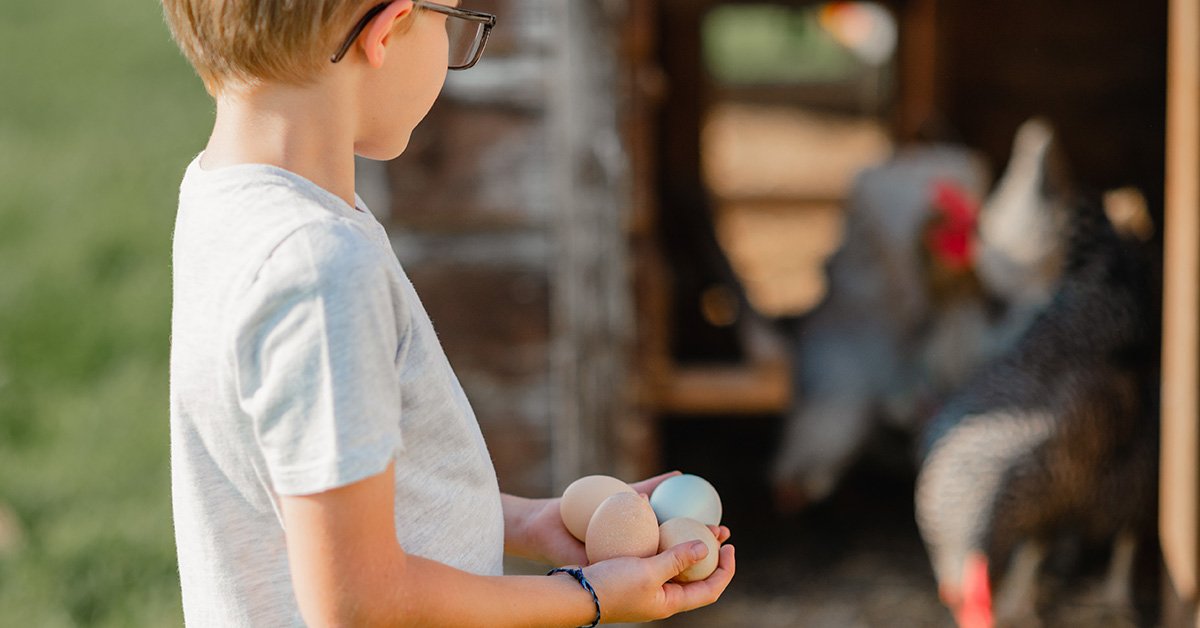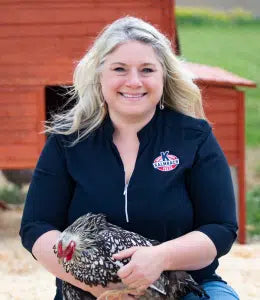What to Expect When Your New Chicks Start Laying Eggs

If you invested in some baby chicks this spring, it’s time to start watching your nesting boxes! Finding the first egg from a group of new pullets is one of the most exciting parts of poultry keeping. Whether this is your first flock or your 100th flock, finding that first egg is so exciting EVERY SINGLE TIME! Trust me, it never gets old and I am always so proud of my girls every time I find that first BEAUTIFUL egg.
When Will My Pullets Start Laying Eggs?
While we eagerly watch for the first egg, it’s important to know that the start of egg laying in a young hen can vary greatly based on her breed. Some hens will begin laying eggs as early as 4 months of age while others may not reach sexual maturity (i.e., laying eggs) until closer to 6 or 8 months of age.
Many types of poultry are prolific layers and have a strong genetic predisposition to reaching early sexual maturity. Under ideal conditions, you can anticipate your first egg from these breeds as early as 4 months. Examples of early-maturing layers include, but are not limited to, Single Comb White Leghorns, New Hampshires, Red Island Reds, and many of our egg-type hybrids (ISA Browns, Red Sex Links, Golden Comets, etc.). Many of our slower-growing breeds and most of our colorful-egg laying poultry, won’t reach sexual maturity until 5 to 6 months of age. Examples of these layers include, but are not limited to, Polish, Buff Orpingtons, Olive Eggers, and Ameraucanas.
When Should I Switch to Layer Feed?
Since there is a wide range in the age of sexual maturity between breeds, you may wonder about the ideal time to switch from starter/grower to layer feed. Continue to feed a well-balanced chick feed like Kalmbach Chickhouse Reserve or Kalmbach 18% All-Natural Start Right Chick until your birds are at least 16 weeks of age. Once your hens reach 16 weeks OR you see the first egg, make the switch to a complete layer feed.
What to Consider Before the Transition to Layer Feed?
Did you know that the size of an egg is directly influenced by the age of a hen? Young, first-time layers will usually start their egg journey by producing very small (pee-wee) eggs. These small eggs are important because they give the reproductive tract some “practice” before the hen begins consistent production of larger eggs.
Another huge factor in egg size is the amount of protein and amino acids in a hen’s feed. This is really important for young, newly-mature hens! Higher crude protein (CP) equals larger eggs and, larger eggs can equal more problems for first-time egg layers. Young hens fed starter/grower feeds with too much protein could have problems physically laying eggs because her reproductive tract is immature and her first eggs could be larger than normal. Young hens laying larger-than-normal eggs are also more susceptible to prolapse, damage to the reproductive tract, and becoming egg-bound. It’s very important to make sure you are choosing the right starter/grower feed in the final 4-6 weeks before egg production begins. You want to make sure you are not over-feeding protein so you can avoid any of these potential issues. A 3 to 4-month-old pullet needs a starter/grower feed in the 16-20% crude protein range before she begins laying. Using a starter/grower feed with much higher CP could result in problems for your young girls as they begin to lay.
It’s also important to consider that many of our favorite treats and snacks – mealworms and other insects! – are very high in CP. Make sure you are limiting those snacks to small amounts or wait until your hen is laying consistently before introducing any of these yummy extras.
I Got My First Eggs!! Now What?
Although absolutely perfect in your eyes, it is normal for the first eggs of a new hen to have faults. Remember my mantra. Egg production is reproduction! A young hen has an immature reproductive tract. Her body is just ramping up on reproduction and she may need a little time to get everything working properly. It’s normal for young hens to lay pee-wee eggs, double yolks, or fairy eggs. These eggs are safe to eat and, within the next 2-4 weeks of production, most of these issues will resolve as the young hen matures and settles into her egg-laying cycle.
Not laying in the nesting boxes is another common mishap for first-time layers. If your new hens are being introduced to an existing flock, the young girls will usually learn from the older girls that the nesting box is the place for egg laying. However, if you have a brand new flock, then laying eggs on the ground or in odd locations can be a common concern. Make sure your nesting boxes are easily accessible and in a quiet and dark location. Quiet and dark is where your hen feels the safest when laying. It can also help to place other eggs or even wooden eggs in the nesting boxes to encourage your girls to use them from a young age.
Lastly, the most important thing to do is enjoy this exciting new phase in your chicken-keeping journey. After investing so much time and energy into raising our babies, it’s really fun to see them grow into mature young hens and excellent egg producers. Enjoy those delicious farm-fresh eggs!
Keeping poultry is such a wonderful experience and the rewards are many! At Kalmbach Feeds, we are always here to help. If you have any questions about the nutrient needs of your birds, feed options, or general poultry keeping, please let us know. We are so excited to continue writing about all of the topics that are important to you and can’t wait to continue learning about your flocks. Stay tuned and thank you for choosing Kalmbach Feeds!
